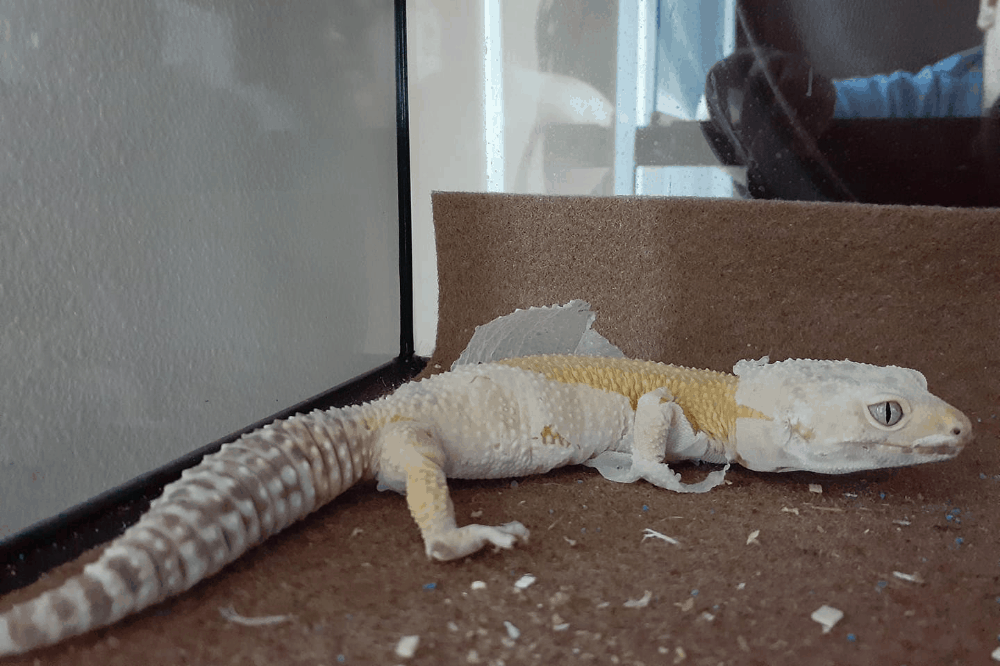Leopard geckos are placid, nocturnal, and simple to train in the wild. They make excellent pets since they are easy to care for and fascinating to observe. Leopard geckos, which may be yellow, white, or black, are interesting-looking reptiles that go through many hairs. It’s an intriguing feature, but it may be one of the most problematic for gecko owners if things don’t always go to plan. In this section, you’ll find answers to common concerns concerning gecko shedding and information on what you could do to assist. Let’s check out the leopard gecko shedding tips- how often leopard gecko sheds.
Table of Contents
Why Do Leopard Geckos Shed?
There are several reasons why reptiles shed. One of the most critical functions is to aid in the growth of new skin. Aside from cleaning themselves of external parasites and developing their adult color, shed also helps them store nutrition and recover from skin injuries. Ticks and lice that might otherwise infect animals in the wild are kept at bay by clearing.
Shedding repeatedly over months may also aid in the recovery of minor injuries such as bites or scrapes. However, wild animals aren’t the only ones that lose their skin. They shed as they develop, renew their skin cells and alter their skin color in leopard geckos that are healthy and well cared for.
When a Leopard Gecko Sheds, What Happens?
His body will begin creating fluid between the outer layer of the skin and the layer directly underneath it a week or so before he sheds. This liquid will act as lubrication to facilitate the removal of the epidermis. Skin about to shed loosens up a little when this procedure is completed. Your leopard gecko may seem “milky” or “faded” if you do this.
The design on your lizard may be less defined, and the colors may not appear as vibrant as they usually do. After a few days, your lizard will begin shedding its old skin. Your lizard may be acting abnormally or chewing at his flesh during this period. Relax. He’s only trying to get rid of the old skin. Some snakes shed their skin in a single piece, but this is not always the case. More often, the old skin breaks off into numerous huge pieces.
What are Leopard Gecko Shedding Problems?
Your pet’s shed should be closely monitored and, if necessary, assisted by you. Even though shedding difficulties are very uncommon, they may lead to limb loss and harm. As shed constricts blood flow, your leopard gecko may lose its toes and tail if you leave it trapped. Your leopard gecko’s best bet for successful shedding is to put up an appropriate cage for him.
It should be easy for your leopard gecko to shed if their environment and nutrition are correct. Don’t attempt to remove a jammed shed on your own. Damage to the sensitive skin underneath might result from ripping out a stubborn layer of hair. When you soak, spray, or bathe your lizard, it’s simpler for it to lose its skin.
Ensure that your lizard’s environment is humidified correctly and provide exact humidity levels before and throughout shed cycles, examine his fingers, tail tip, and eyes after shedding, and if anything appears amiss, call your veterinarian.
How Often Leopard Gecko Sheds?
Depending on the leopard gecko’s age and health, the reptile’s skin will shed differently. If you’ve ever seen a baby leopard gecko, you know that they lose their skin each week or two, but leopard geckos shed their dead skin every 4 to 8 weeks as they get older.
Leopard gecko shedding tips- how often leopard gecko sheds – I hope you have got all the details!!
